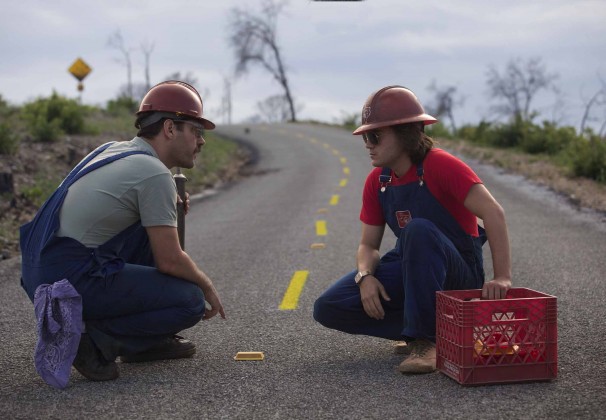
David Gordon Green is unpredictable. Having made a name for himself with quiet, emotional character dramas like “All The Real Girls” and “Snow Angels,” the director tried something different — and greatly succeeded — with 2008’s acclaimed stoner comedy “Pineapple Express.”
Green’s new film, “Prince Avalanche,” is a little of both. The film is not explicitly a comedy or a drama and is adapted from a 60-page script that often ventured into uncharted territory. For “Avalanche” stars Paul Rudd and Emile Hirsch, the experience differed from a traditional film shoot.
“Anyone who’s ever been on a film set knows within a day how boring it is,” Hirsch said. “It is a mind-numbingly boring process 90 percent of the time, and then there’s 10 percent where you’re actually acting, and you’re like, ‘This is awesome.’”
“With ‘Prince Avalanche’ … we were like, ‘OK, let’s go into the woods,” Hirsch said. “And let’s take everything that we don’t like about making movies, which is the waiting around, the boredom, the tedium, the executives telling you what to do, and let’s just make a movie on our own terms.”
This is both Hirsch and Rudd’s first time working with Green, though Rudd and Green had unsuccessfully once tried to get a project started together.
“I always had a sense that I would like working with David, and I felt like we would speak a similar language,” Rudd said. “And I know that a lot of the things that make David laugh are things that make me laugh … he’s so free, he likes to be surprised, he could care less if we say what’s written [in the script.]”
Filmed in 16 days, “Avalanche” tells the story of two opposites — subdued Alvin (Rudd) and immature Lance (Hirsch) — whose personalities clash while spending the summer repainting a highway. Though “Avalanche” is almost entirely centered on the two stars, the film’s score from band Explosions in the Sky and composer David Wingo also plays an important role.
“I think that the film has a certain magical haunted quality to it, which separates it from a lot of other movies,” Hirsch said. “And I think that’s a direct result of this score that’s infused in it. And there’s an addictive quality to the score — so it’s like, you almost want to see the movie a second time to hear the music again … because it really is that good.”
Adding to the film’s persona is its location. Shot in Bastrop State Park in Texas, which was mostly burned in a 2011 fire, the film is a melancholy look at an area where entire homes and histories were destroyed.
In fact, one of the film’s most poignant scenes features non-actress Joyce Payne, who actually did lose her house in the fire, and was found by a producer searching through the ashes of her own home.
“She kicked all of our asses,” Rudd said. “She’s the real deal. She’s an amazing woman. Every word she spoke, it seemed like she was ready to burst into tears … she has lived an amazing life, and traveled and lived in other countries.”
“And every single thing she owned, antiques and stuff she’d collected, everything was gone,” Rudd said. “So there was this sense she felt lost, because what does she have to prove who she is? And it’s the kind of thing that I don’t think you can ever really wrap your head around until it happens to you.”
As Green knows, for a movie to include such a scene, a little unpredictability is essential.
Jeremy Grossman is arts editor. Email him at [email protected].

























































































































































